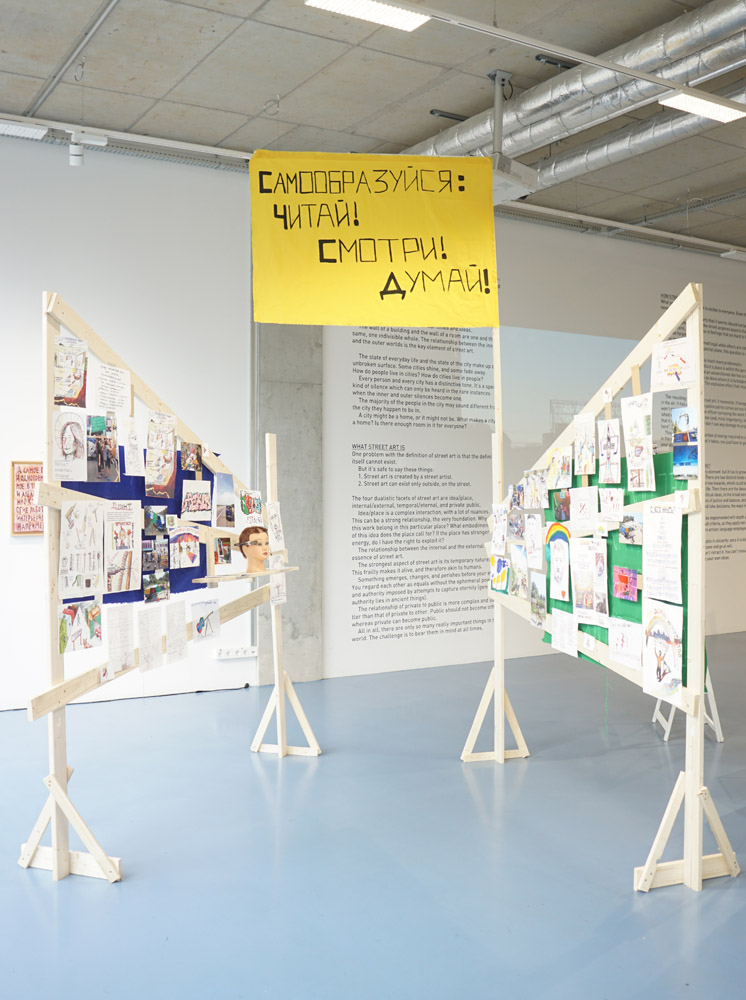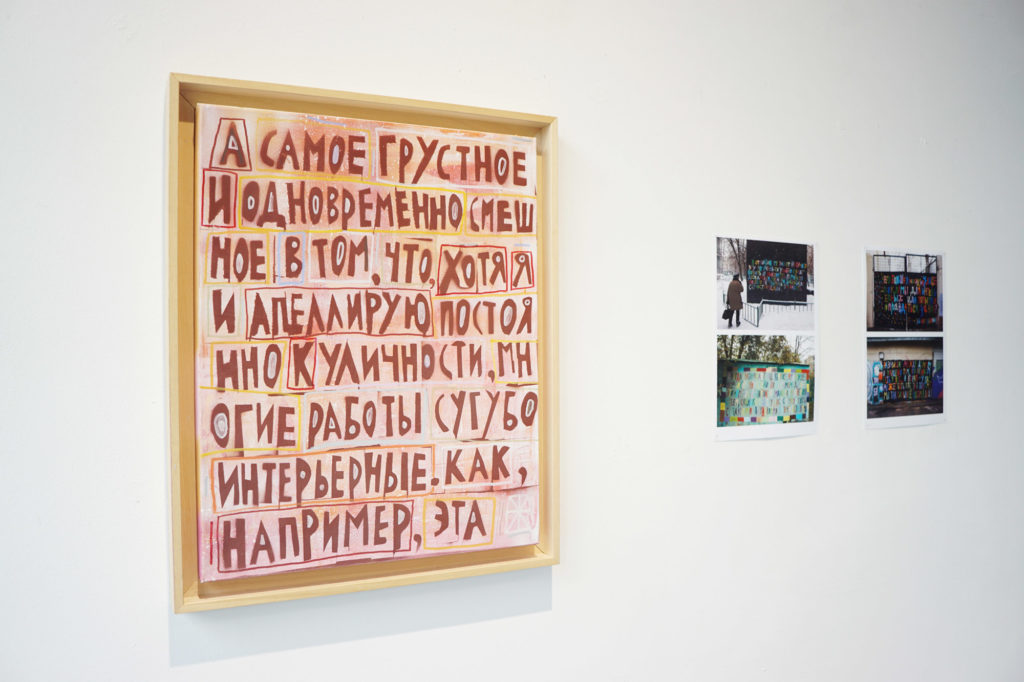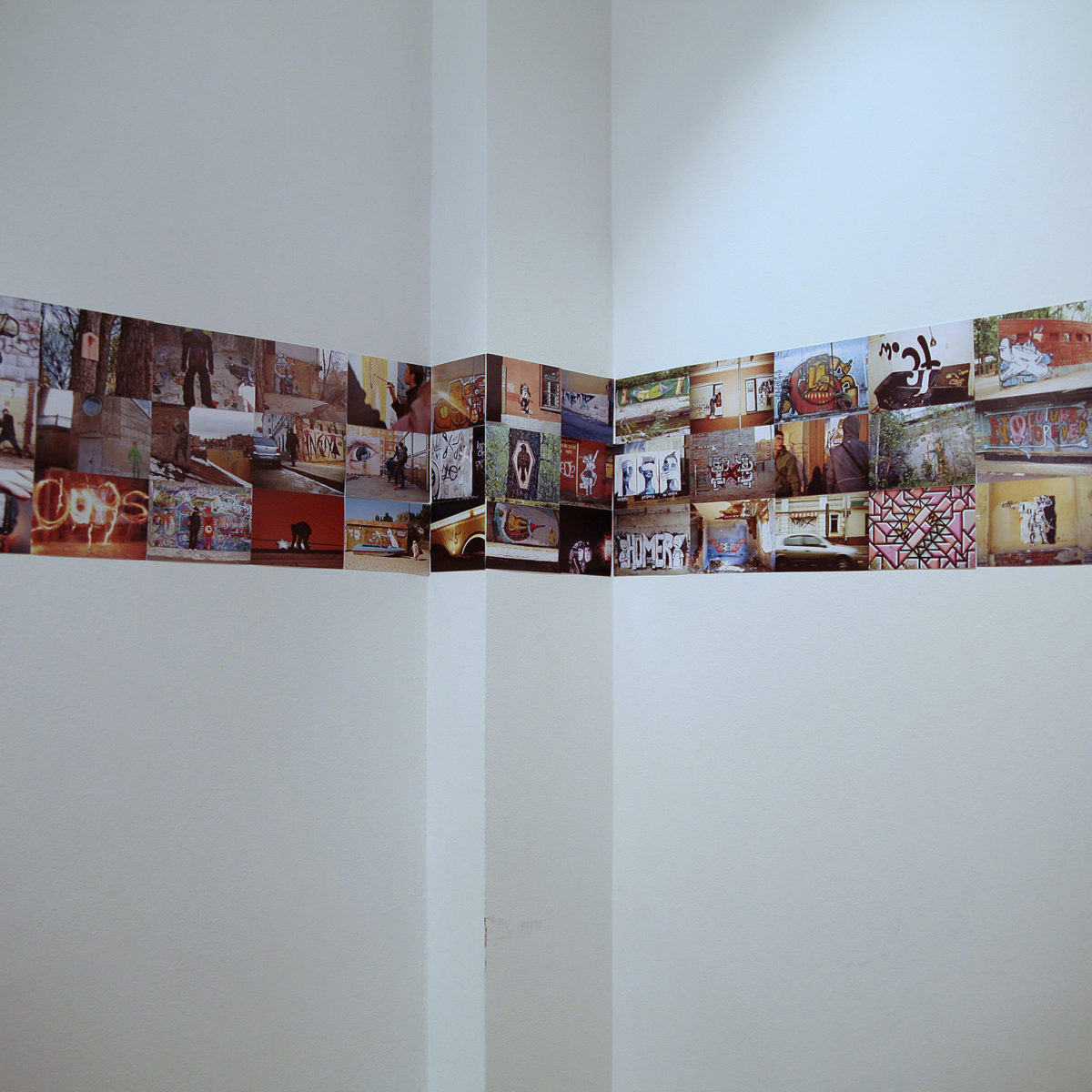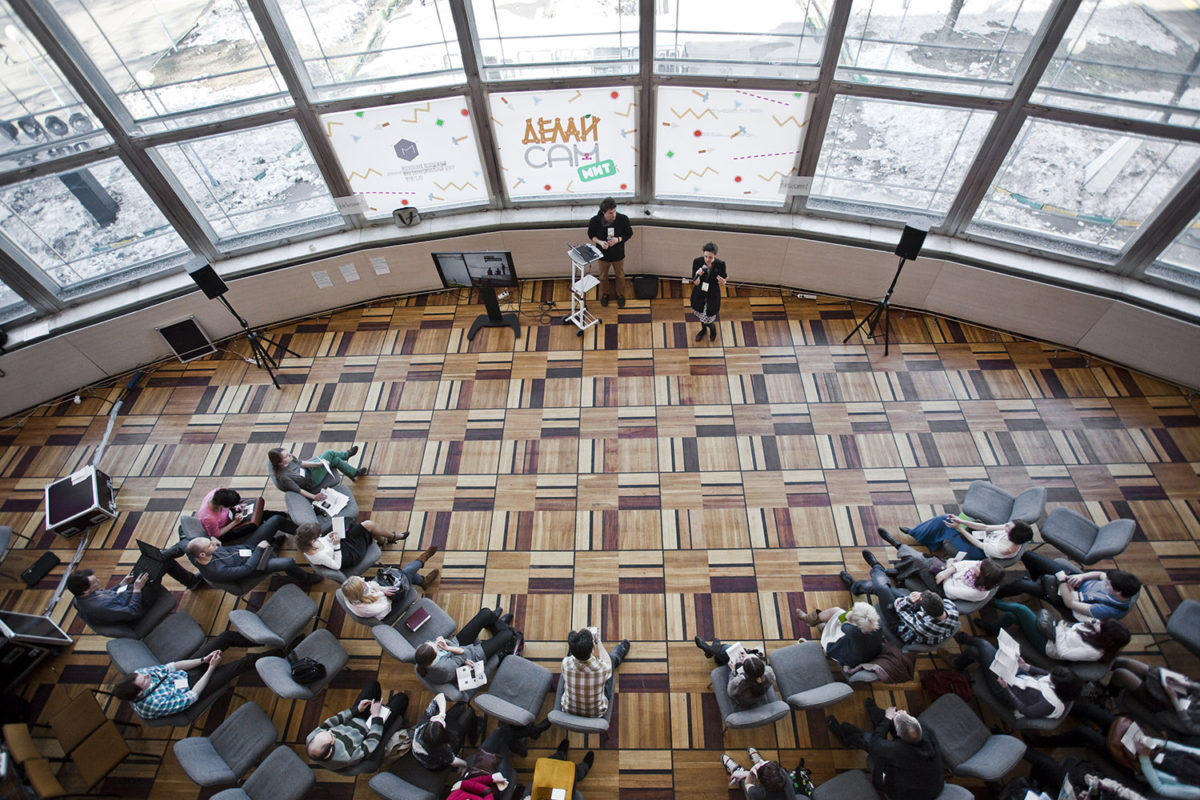2017
Berlin, Germany
A group show at the CLB Gallery
The modern city is an infinitely complex system that does not allow for any failures or mistakes. Each place in the city is regulated, each object has its own function and trajectory. But what would happen if we broke this trajectory? What if we looked behind the concrete fence or vinyl pseudo-facade to reveal the construction going on for years? What if we interfered in the urban planning process, giving a voice to those who have been excluded from it? The list of such “ifs” can go on forever.
Urbanism has been repeatedly criticized since the mid-1960s: Henri Lefebvre pointed out that “the right to the city” should belong to all its residents, not just the ruling class. Guy Debord and Ivan Shcheglov pointed out in their books and manifestos that “urbanization is an effective means for preserving power”, and a “slow ticking bomb”. In the context of the 21st century, the issue is much broader than that of the 60s’ – along with motorization, the influence of information technology, creative industries and, to a large extent, the consumer approach to public spaces have significantly changed the city itself, as well as its perception. David Harvey, a contemporary critic of neo-liberalism, while expanding upon the works of Lefebvre, has even introduced a specific term – “Disneyfication” – to describe the process of raising capital by speculating upon the specific cultural traits of the city, including the ones that are local and independent.
There is much tension around the issue of democratization of public spaces – not only in the West, but in all countries. Russia is no exception to this: urban forums are being organized all over the country, grassroots initiatives aimed at involving local communities are emerging and Moscow is gaining the status of the country’s main creative cluster. Having said that, the Soviet experience of collective life with its wide avenues and Stalinist architecture often calls for an unconventional approach. That is why artistic and interdisciplinary practices play a leading role in changing the Russian city towards democratization and humanization of its spaces.
Independent art practices presented at the exhibition are but examples of such a nuanced study of the vital aspects of the Russian city – be it the infrastructure, ways of interaction with the inhabitants, or the flora and fauna subsumed as well as generated by the urbanized environment. In each case, these practices form a sort of an alternative system of reference, built by the artist in order to disengage from numerous norms and regulations and turn the study of aspects of urban life into an everyday practice, thereby changing the ways of perceiving reality.
–Igor Ponosov
Artists: Kirill KTO, 0331C & Grisha (Moscow), Timofey Radya (Yekaterinburg), Isadorino Gore (Moscow), Art Group ZIP (Krasnodar), Urban Fauna Lab project (Moscow), Art Group Partizaning (Moscow, St.Petersburg), Vladimir Chernishev (Nizhny Novgorod).

The exhibition was organized within the framework of Coordinate System – an international platform focused on exchanging knowledge about public space research and urban transformation through artistic practice.
The project was accompanied by a publication titled Reclaim, Recode, Reinvent: Urban Art and Activism in Eastern Europe, which I edited. The book published by MitOst, book launches were held in Berlin and Warsaw in 2018.
The exhibition was co-curated with Aleksandra Yurieva-Civjane.






